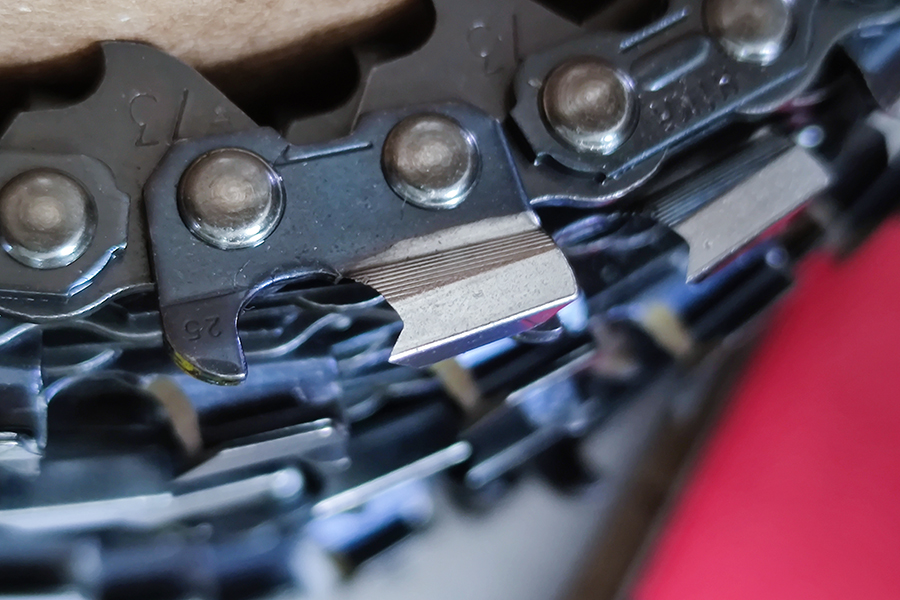Other Chainsaw Chain Features
Some chain manufacturers offer a variety of additional chain design features to increase the functionality and utility of their chains. These typically include grooves or holes in the cutting teeth and link plates to help lubricant stay on the chain during operation.
Pitch
Chain pitch is the distance between a single drive link and the next. This is usually displayed on the tool or in the users manual. To determine the pitch of your existing chain it is best to use a pair of accurate calipers or take it to a shop to have it measured.
Gauge
The chain gauge is the thickness of the drive link and must match the chainsaw guides gauge. This is normally displayed on the tool or in the users manual, although with worn chains it can be difficult to determine without calipers.
Semi chisel chain is less likely to kick back during cutting, and is generally the most versatile of the three chain types. It can cut harder woods and even frozen or dirty lumber with ease. Square chisel chain is reserved for professional use and is the most aggressive cutting chain. It is also the most expensive but can handle environments that would quickly wear normal chains out until useless.


 英语
英语 西班牙语
西班牙语















